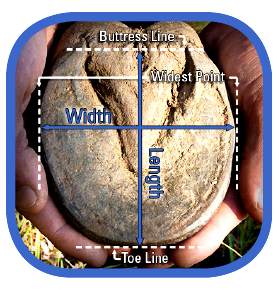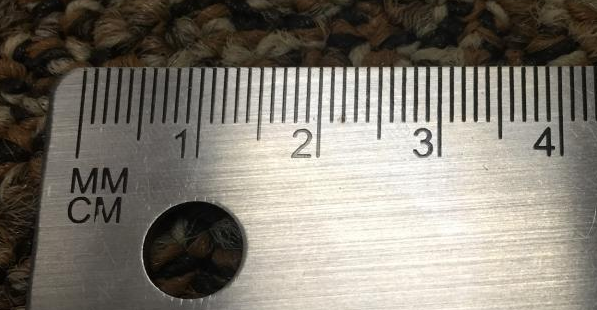HOW TO MEASURE YOUR HORSE:Before you buy be sure to measure your horses hooves correctly as described below. The below instructions apply for measuring your horse for either boots or poly shoes
Correct sizing is everything with hoof boots! We cannot stress this point enough! 1. Measure your horses width and length after a fresh trim as shown above. Make sure you measure each hoof you need hoof protection for. 2. Remember to only measure your length measurement from the tip of the toe line to the BUTTRESS line. Do not include the heel bulbs or you will purchase a boot that is too big for your horse. 3. Check the sizing chart for the boot or shoe you want to purchase, both length and width. Choose styles that suit your horse's measurements. 4. Ideally your width and length measurements will fit into the same sizing. If the length and width measurements indicate different sizes select the larger size. If the width and length are different by more than one size your selected boot style is not recommended. You may find an alternative boot style in the Easycare range that is more suited to your hoof shape. 5. Worried the boot may be a bit too big, then simply call our specialist staff on 0244573022 and they will advise if a comfort pad 6mm or 12mm can be used to make the boot fit better. Note: If you are thinking of purchasing either a Easyboot Glove, Glue on or Fury boot then a fit kit should be hired prior to purchase. Each of these style of boots have their own fit kit to try. Refer to the boot shop to hire a FIT KIT. Using the sizing chart alone for these particular styles will NOT be enough to find a suitable fit for your horse. Some boot styles will accommodate less than perfect feet - or club feet, these are the ones that enclose more of the entire hoof capsule or have fastening systems that can draw in the top of the boot.
Tips for Fitting Success:
For good boot fit a 4 weekly cycle is recommended. If you are on a longer trim cycle between trimmer's visits sometimes it's necessary to use a more high profile boot that will accommodate a little flaring. Measure carefully, use metric measurements they are more accurate. Boot sizes also do not equate to shoe sizes.
One question we are often get asked is, “Why can’t I measure in inches and convert to millimetres?” The problem here is two-fold. First, most of the time when people measure in inches they tend to round to the nearest inch, or fraction of an inch. Second, one inch does not convert to an even millimetre measurement. One inch is equal to 25.4 millimetres. When rounding your inches measurements, it will obscure your millimetres conversion by nearly 0.5 millimetres. This may not seem like much, but if you take 0.5 millimetres off of each inch measured, the difference can be quite significant. This is especially an issue when trying to fit a boot, like the Easyboot Glove, which requires precise measurements for a proper fit. Great fit only comes from accurate measurements taken correctly. Thanks for helping us, help you, get the most out of your Easycare boots. |
|



